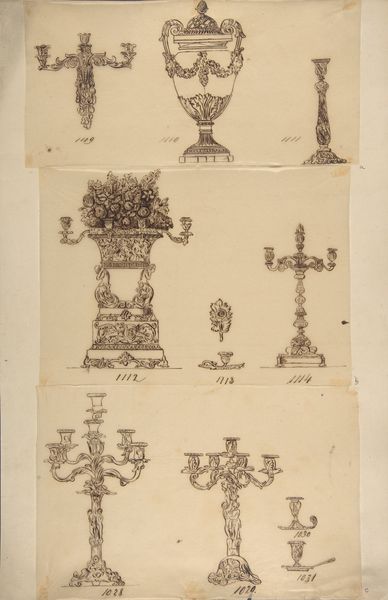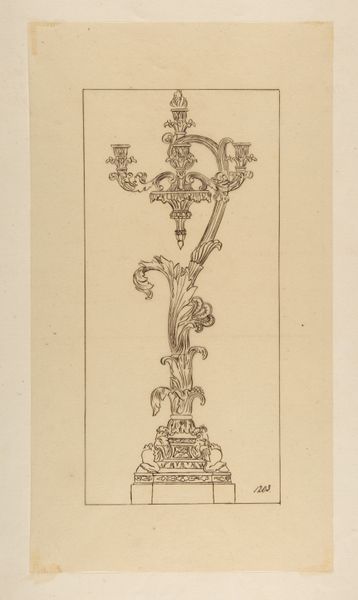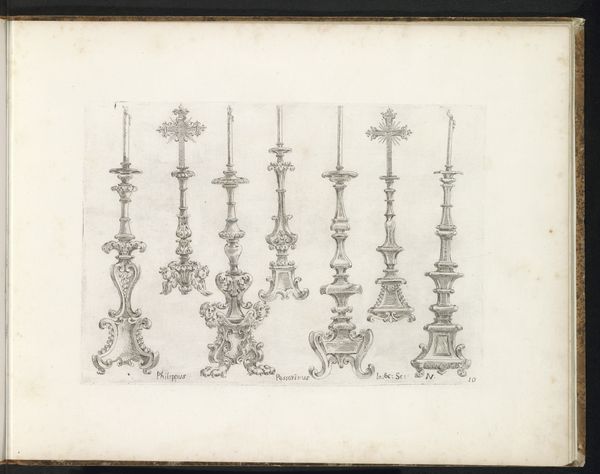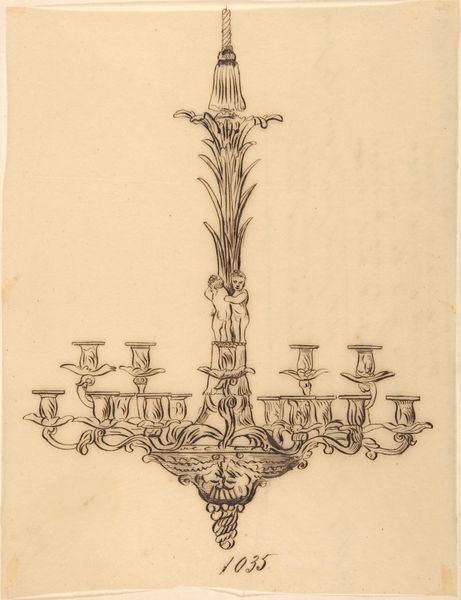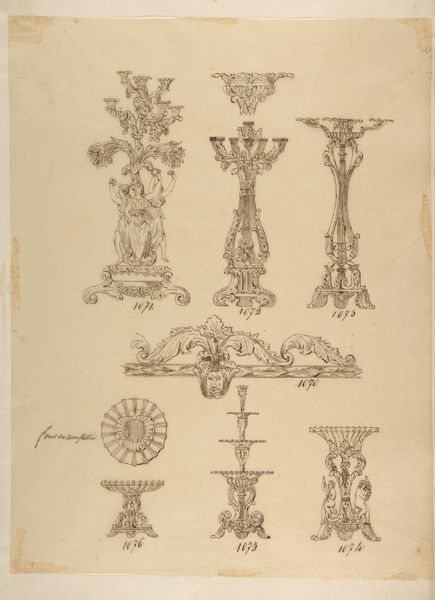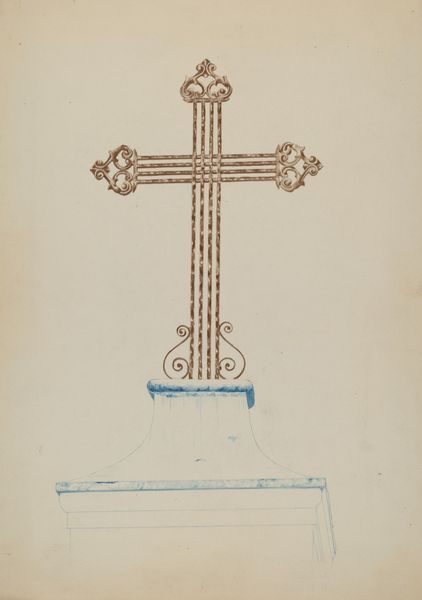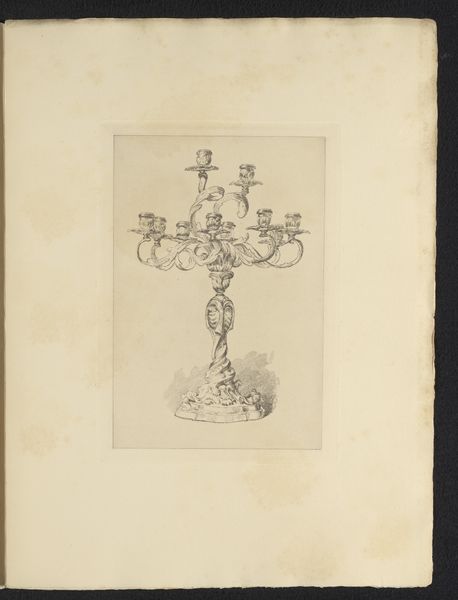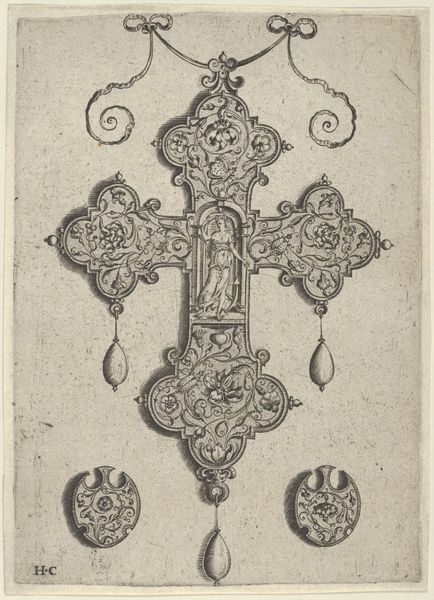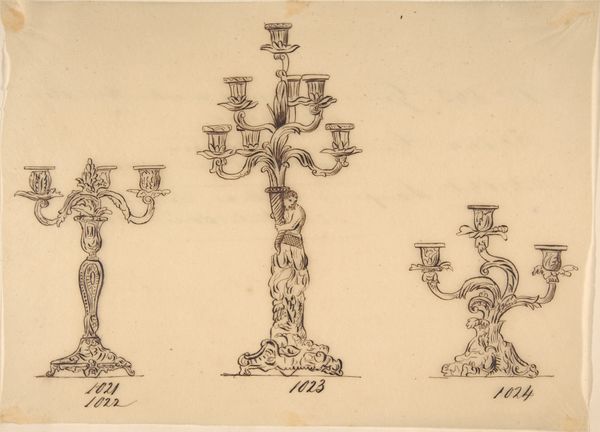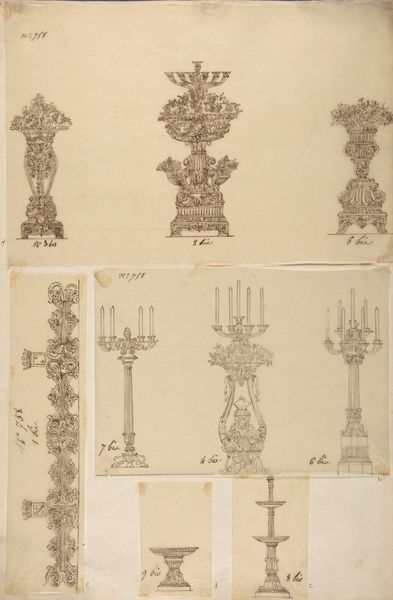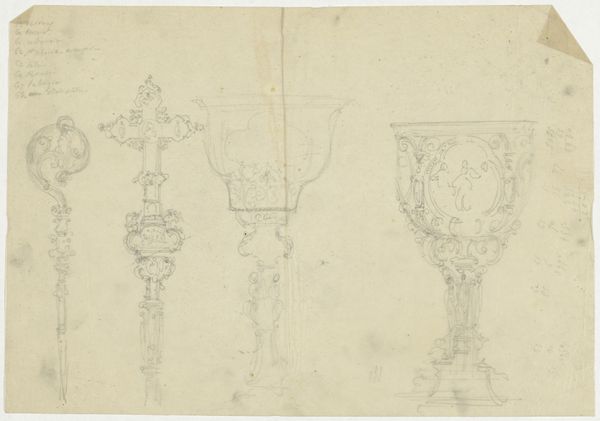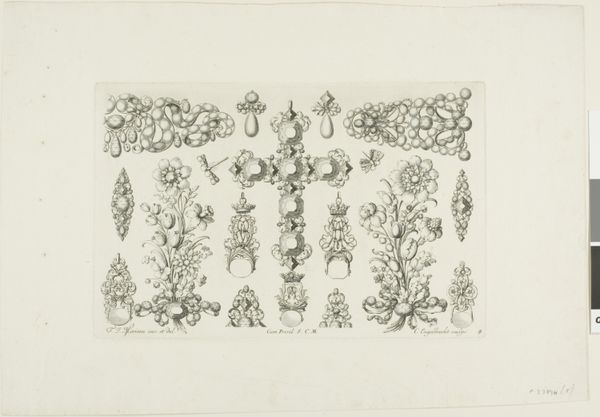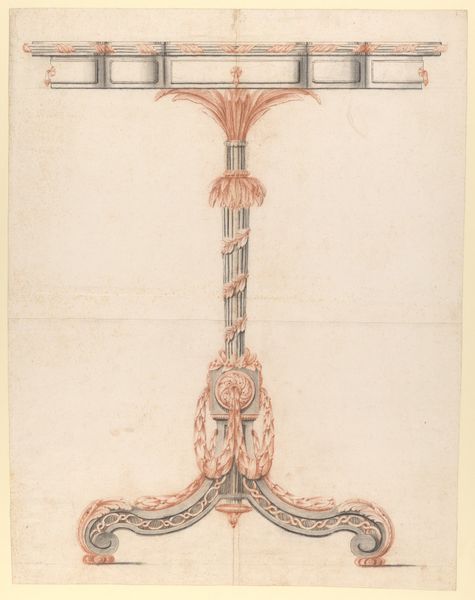
drawing, print, ink, engraving
#
drawing
# print
#
ink
#
history-painting
#
decorative-art
#
engraving
Dimensions: sheet: 7 5/8 x 10 1/16 in. (19.4 x 25.6 cm)
Copyright: Public Domain
Editor: We're looking at a print titled "Designs for Four Candle Fixtures," from the 19th century, artist unknown. It's rendered in ink, showcasing decorative art. The visual that pops out at me are the serially presented candelabra designs, so classic and...refined! What can you tell us about this image? Curator: This print provides a glimpse into the 19th-century world of decorative arts and design production. Consider the role prints played at the time. Were these designs meant for mass production? For dissemination of style? Or as a sample book for prospective clients? The inclusion of numbering – '1025', '1036' – indicates perhaps their indexing within a broader catalogue. How do you think these factors influence our understanding? Editor: That’s a fascinating point – I hadn't considered the commercial function of art! It does look like a catalog page now that you mention it. Why would it be important for designers to produce something like this? Curator: Precisely! In the 19th century, the rise of industrialization and consumer culture demanded readily available designs. These prints offered a way to standardize taste, dictate trends, and allow for replication, playing a crucial role in the development of mass culture and the democratisation, in some respects, of design. What do you think about this tension between artistry and commerce? Editor: It is interesting to think about democratizing art, I suppose creating some opportunity and expectation of it for many in the public through commerce is still better than the elite keeping the "best" art for themselves. This makes me think about how tastes get made or invented and promoted in service of culture and commerce together. Thanks, this has me seeing a very common image, in a new light! Curator: Exactly. By understanding these designs as products of specific socio-economic forces, we gain a richer perspective on the intersection of art, industry, and the shaping of public taste. We might ask who benefits from a particular public taste.
Comments
No comments
Be the first to comment and join the conversation on the ultimate creative platform.
